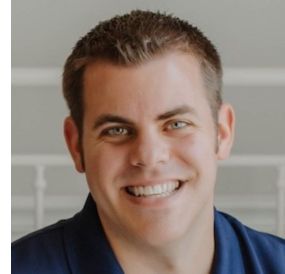
Navigating Radiation Safety in Manufacturing: A Talk with the RSO at Curium Pharma
Radiation safety is a crucial aspect of the manufacturing sector, especially for industries handling radioactive materials. Here we delve into the insights shared by Matthew Trusner, the Radiation Safety Officer (RSO) at Curium Pharma, during his Fireside Chat with Shawn Pickett, the Practice Director for LANDAUER Radiation Safety Support Services. During their chat, they discussed best practices, challenges, and strategies for maintaining safety standards in the manufacturing sector.
 The Journey to Radiation Safety Officer
The Journey to Radiation Safety Officer
Matthew Trusner’s journey to becoming an RSO started from his days as a nuclear medicine technologist. He studied at the Nuclear Medicine Institute at the University of Findlay and worked at Decatur Memorial Hospital. His early career involved significant hands-on experience with nuclear medicine, which laid the groundwork for his later expertise in radiation safety. He worked for over a decade as a technologist before transitioning to a more administrative role.
Matthew’s transition from technologist to RSO was marked by his involvement in the startup ZEVACOR, which aimed to commercialize cyclotron-produced isotopes. His hands-on experience and deep understanding of radiation safety made him an ideal candidate to oversee safety protocols at ZEVACOR. When Curium Pharma acquired ZEVACOR, Matthew continued his role as RSO, bringing his expertise and experience to a larger platform.
His role at Curium is multifaceted, involving the development and implementation of safety procedures, ensuring compliance with regulations, and conducting staff training. Regular monitoring of radiation levels and maintaining safety equipment are also critical aspects of his responsibilities. Matthew emphasizes the importance of being proactive and knowledgeable, as the RSO’s role is pivotal in safeguarding the health and safety of workers and the public.
Practical Applications in Radiation Safety
In the manufacturing context, radiation safety measures must be integrated into daily operations. Matthew shared several practical applications that are essential for ensuring safety:
- Personal Protective Equipment (PPE): Ensuring that all employees use appropriate PPE, such as lead aprons and gloves, when working near radiation sources is crucial. This minimizes exposure and protects workers from harmful radiation.
- Regular Safety Audits: Conducting periodic safety audits helps identify and address potential safety issues. These audits ensure that all safety protocols are being followed and that any deviations are corrected promptly.
- Emergency Preparedness: Developing and practicing emergency response plans is essential for handling radiation incidents effectively. Matthew’s facility conducts regular drills and maintains a strong relationship with local emergency services, such as the Noblesville Fire Department. This ensures that everyone knows their role in the event of an incident and can respond swiftly and effectively.
- Monitoring Radiation Levels: Using radiation detection and monitoring devices helps in the early identification of any radiation leaks or unsafe conditions. Regular monitoring ensures that radiation levels remain within safe limits and any anomalies are addressed immediately.
- Managing Possession Limits: Keeping track of the amount of radioactive material on-site is crucial for compliance with regulatory limits. Matthew shared how he constantly monitors possession limits to ensure they do not exceed the allowed amounts, preventing potential regulatory issues.
- Decommissioning Funding Plans: Establishing a decommissioning funding plan ensures that funds are available to safely dismantle and decontaminate the facility if it ceases operations. This financial safety net is crucial for managing the complexities of radioactive material disposal and ensuring site safety even after operations end.

Overcoming Unique Challenges
Managing possession limits and decommissioning funding plans are unique challenges in radiation safety. For instance, Matthew explained the concept of a decommissioning funding plan, which ensures that funds are available to safely dismantle and decontaminate a facility if it ceases operations. This is akin to having a financial safety net to handle the complexities of radioactive material disposal.
Navigating regulatory challenges is another significant aspect of his role. One of the primary challenges involves managing possession limits for radioactive materials. As production scales up or new isotopes are introduced, it’s crucial to ensure that the facility remains within the licensed limits. This requires constant monitoring and frequent updates to the license to reflect current operations.
Additionally, introducing new isotopes or technologies can be complex due to the need for detailed facility layouts and safety protocols to be submitted for regulatory approval. The NRC often requires extensive documentation and sometimes on-site inspections to ensure compliance. Effective communication and proactive engagement with regulators are essential to navigate these processes smoothly.
Keys to Success for an RSO
Success as an RSO, according to Matthew Trusner, hinges on several key factors. First, maintaining composure and being “the calmest head in the room” is crucial, as radiation safety can be an emotional and high-stress field. Embracing chaos and seeing it as an opportunity to add value and improve systems is another vital aspect.
Effective communication is also essential. Matthew advocates for an open-door policy where employees feel comfortable reporting safety concerns. He emphasizes the importance of being seen as an educator rather than an enforcer, fostering a culture of safety and openness. Additionally, understanding how each team member communicates best, whether through text, email, or in-person conversations, helps in managing the team effectively.
Lastly, continuous professional development is crucial. Having a dedicated budget for training and conferences ensures that the team stays updated with the latest advancements in the field. Leveraging resources like local Health Physics chapters and industry-specific LinkedIn networks can provide valuable information and networking opportunities. These strategies combined help create a robust and proactive radiation safety program.
Conclusion
Effective radiation safety in manufacturing involves a comprehensive approach. It requires adherence to fundamental safety principles, proactive involvement from the RSO, and ongoing professional development. By following these guidelines, manufacturing facilities can work towards a safer working environment and compliance with regulatory standards.
